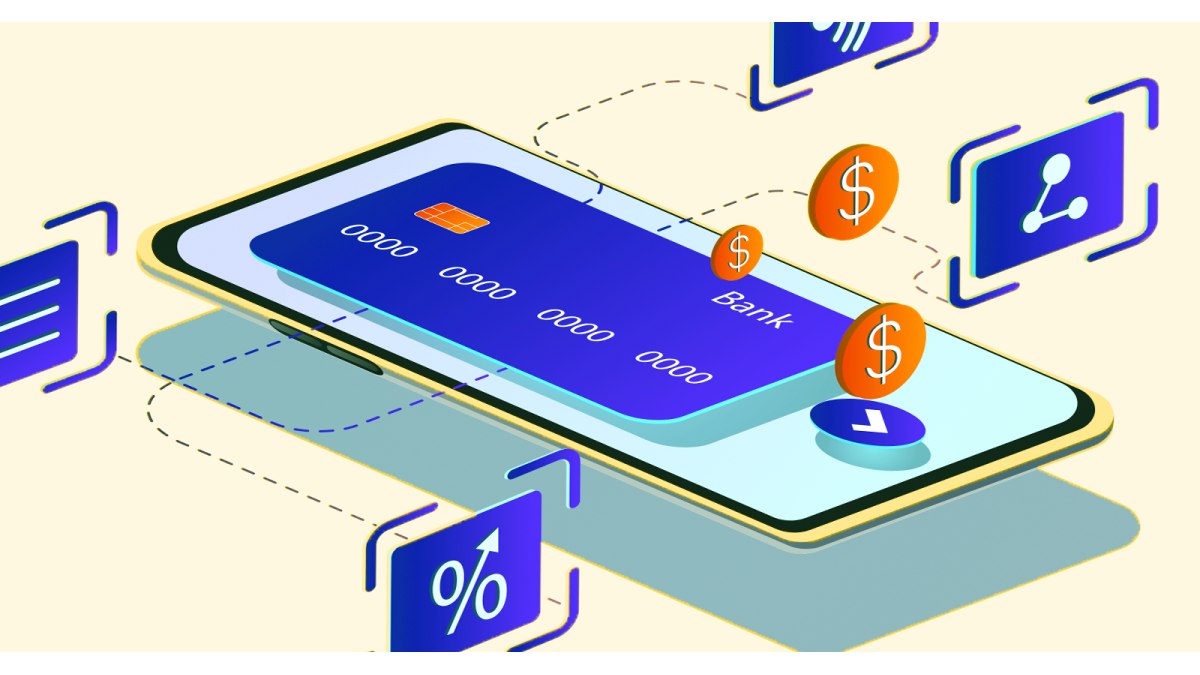
This guide will explain embedded finance, explain how it appears in our daily lives, and go over its advantages and potential drawbacks.
Embedded finance is one of those terms in the financial world that you may be familiar with but not fully grasp. Although many people might find it difficult to define, its frequent use would suggest that it is something we engage with on a regular basis.
In actuality, one of the most innovative uses of technology in the finance industry nowadays is embedded finance. We use embedded finance daily, and without it, our lives would be considerably less convenient, as you may not be aware. We’ll define it, explain how it manifests in our daily lives, and go over any potential drawbacks in this guide.
Essentially, embedded finance is nothing more than the application of financial technologies to non-financial domains. Payment processors and banking apps are examples of common financial applications. Payments and other financial transactions are the main purpose of these applications.
Applications for food delivery, ridesharing, clothes shopping, and other non-financial uses are examples. The main motivation behind creating these applications was non-financial. You can, however, carry out financial transactions inside of them. These consist of paying bills on time, making credit purchases, and so forth. Although it means that users can complete transactions on these apps, this does not alter the nature of these applications. For instance, you use PayPal to pay for a meal delivery through an app. Although it does not imply that the app has turned into a financial app per se, it does indicate that there has been some communication between it and different financial institutions.
Because embedded finance has connected financial and non-financial apps in ways we never could have imagined, it has revolutionized the consumer market. Every day, billions of dollars worth of transactions are completed through it, and customers benefit from practically unheard-of convenience.
Now that we understand what embedded finance is, it is worthwhile to investigate its initial operation. Application programming interfaces are the fundamental component of embedded finance. (APIs). In essence, APIs are the backend of different programs and applications that are used to provide clients with services. You are interacting with a shopping app’s API when you log in and browse through its options. For example, the app’s API is connected to PayPal, allowing payment through it when you choose to purchase it.
When you make a purchase using a non-financial app, you are typically prompted to connect to another financial institution, enter or save your card information, or log into your PayPal account to approve the transactions. This process is essentially the interaction between the non-financial app you are using and the APIs of your payment provider. In a word, embedded finance is the integration of this financial service that makes it possible for you to do this.
Consider all of the applications you use to make purchases, purchase items on credit, and so forth to get a sense of the sheer scope of embedded finance.
We constantly come into contact with embedded finance because it is all around us. These examples demonstrate embedded finance:
Because embedded finance provides users with the following advantages, it has become widely used:
However, there are certain difficulties with embedded finance, some of which are listed below:
Fintech solutions are frequently integrated with banking and payment services on non-financial platforms as part of embedded finance. Fintech can be integrated into a non-financial platform, for instance, by opening a line of credit with an online retailer and paying for goods in installments.
However, embedded fintech is a completely different idea and should not be confused with this.
Thus far, fintech appears to have a big impact on embedded finance, and as more fintech solutions emerge, we can anticipate seeing them appear on other non-financial platforms as well.
The distinction between the non-financial platforms we use and the financial platforms we rely on is becoming increasingly blurred. From the comfort of applications and platforms that weren’t created for financial purposes, we can spend money from our bank accounts, make credit purchases, invest in stocks, and take advantage of other financial services. All of this is possible because of embedded finance’s innovation.
Not only has embedded finance made life more convenient for customers, but also for the companies that cater to them. Despite certain drawbacks, such as higher expenses and security threats, embedded finance has turned out to be beneficial for the financial and business sectors overall. Furthermore, they will continue to be a mainstay of contemporary society as more financial innovations reach the market and consumer demands rise.
May is Small Business Month, a time to honor and recognize the achievements of the… Read More
Swiss International University (SIU) is on track to be one of the world's most respected… Read More
In a session that left students buzzing with fresh ideas and practical insights, Invertis University… Read More
At the 21st Shanghai International Automobile Industry Exhibition, which is surging with the wave of… Read More
Liverpool, UK—House of Spells and Comic Con Liverpool are once again collaborating to bring the… Read More
Introduction In India's booming EdTech space, there's one name that's making waves among Telugu students… Read More